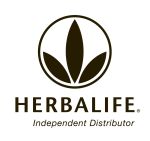Hi, I’m Herbalife nutritionist, Susan Bowerman. A few years back, Dr. Heber and I published the book “What Colour is Your Diet?” In the book, we described 7 different colour categories of fruits and vegetables, and encouraged our readers to aim for one serving from each colour group each day. And while it sounds difficult, or maybe like too much food, it really isn’t. For one thing, those 7 servings could cost you less than 500 calories, and the serving sizes aren’t as big as you might think. Let’s see how you can get this done:
For breakfast, a cup of fruit added to your Herbalife Formula 1 protein shake or stirred into a dish of yogurt will get one serving out of the way right off the bat. Berries will give you a serving from our red-purple group that includes fruits like berries, plums and pomegranate.
At lunchtime, if you have a large salad with romaine lettuce and a sliced tomato, that’s 2 more colourful servings. The lettuce counts as a serving from our yellow-green group, which includes most leafy greens, and the tomato comes from the red group which also includes pink grapefruit and watermelon.
At dinner, if you have a cup each of steamed broccoli and asparagus with your meal, that’s another 2 servings. Our green group includes foods in the cabbage family, like broccoli, cabbage and cauliflower, and the asparagus represents the white-green group, which also includes foods like leeks, onions and artichokes.
We’ve only got two servings to go! Our orange group includes foods like apricots, mango, cantaloupe, winter squash and carrots. Snack on some baby carrots during the day and you’ve got that color taken care of. And lastly, a fresh orange for dessert after lunch or dinner comes from the orange-yellow group, which includes other citrus fruits, pineapple, peaches and papaya.
The Colour Code System for Fruits and Vegetables – Color coding can be a useful device to introduce diversity into the diet. The different colors are important because the different plant chemicals they represent have different effects on the body. By eating regularly from each group, you will obtain a rich group of phytochemicals to help promote good health.
Colour Group: Red (lycopene) Foods: Tomatoes, pasta sauce, tomato soup, tomato-based juices (spicy or regular), and ketchup; pink grapefruit, guava and watermelon.
Colour Group: Red/Purple (anthocyanidins, resveratrol) Foods: Grapes, red wine, grape juice, prunes, cranberries, blueberries, blackberries, strawberries, pomegranate, plums, cherries.
Colour Group: Orange (alpha- and beta-carotene) Foods: Carrots, mangos, apricots, winter squash, cantaloupe, pumpkin, acorn squash, sweet potatoes.
Colour Group: Orange/Yellow (terpenoids, Vitamin C) Foods: Orange juice, oranges, tangerines, yellow grapefruit, lemon, lime, peaches,papaya, pineapple; Lemon, lime, and orange zest.
Colour Group: Yellow/Green (lutein) Foods: Spinach, avocado, collard, mustard, or turnip greens, green peas, green beans, green peppers, yellow peppers, cucumber, kiwi.
Colour Group: Green (glucosinolates) Foods: Broccoli, Brussels sprouts, cabbage, kale, cauliflower, Chinese cabbage or bok choi.
Colour Group: White/Green (allyl Sulfides) Foods: Garlic, onions, leeks, celery, asparagus, artichoke, endive, chives.
Adapted From: What Color Is Your Diet? by David Heber and Susan Bowerman, New York: Harper Collins, 2001

